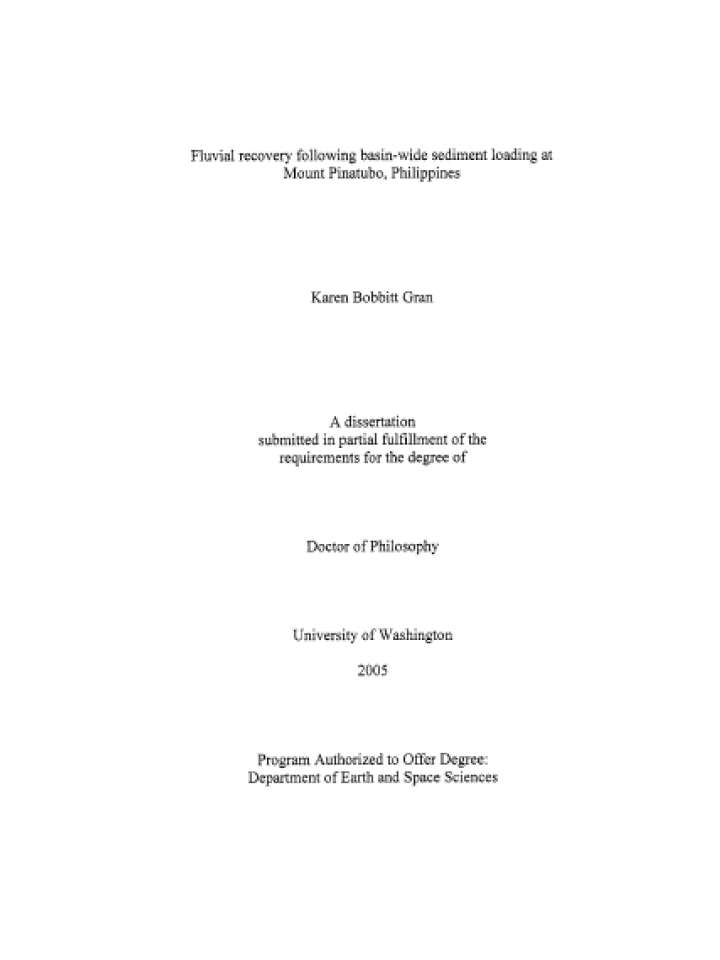Fluvial recovery following basin-wide sediment loading at Mount Pinatubo, Philippines
The June 1991 eruption of Mount Pinatubo, Philippines, was the second largest of the 20th century, emplacing 5--6 km 3 of pyroclastic-flow material and creating record high sediment yields on rivers draining the volcano. This thesis explores landscape response to and recovery from sediment loading in the 1991 eruption from the drainage basin scale to mobility of individual clasts on the bed. Basin-scale erosion patterns were studied on the Pasig-Potrero and Sacobia Rivers for one decade following the eruption using digital elevation models, multispectral imagery, geomorphic terrain maps, and field observations. In the latter half of the decade, channel recovery was examined more closely through a multi-year field campaign on five east side basins measuring flow and channel parameters, grain size distributions, roughness, sediment mobility, and sediment transport. The details of bed coarsening and sediment transport under conditions similar to those at Mount Pinatubo were explored through physical experiments modeling future conditions as sand is depleted.Sediment yields on the Pasig-Potrero and Sacobia Rivers declined exponentially for the first decade following the eruption. Decay coefficients were inversely correlated with initial sediment loading. Erosion of pyroclastic flow deposits from valley incision, widening, and extension dominated sediment yields as early as 1991. Ten years later, sediment yields remained 20 times higher than pre-eruption levels. In the most disturbed basins, mainstem channels were braided and highly mobile. Coarse clasts moved independently over a smooth bed of sand and fine gravel. As sediment yields declined, selective transport preferentially removed sand and pumice, starting in the upper basin, causing downstream fining and gradients in pumice content. As sand content on the bed declined, coarse clasts interacted, leading to cluster formation and decreasing clast mobility. As sand content declines, bed reorganization into coarse and fine patches enables transport rates to remain high over a wide range of sand contents. In the near future, sediment yields on the Pasig-Potrero and Sacobia Rivers should remain elevated rather then declining to pre-eruption levels, sending an additional 14 million m3 of sediment downstream in the second decade after the eruption.
